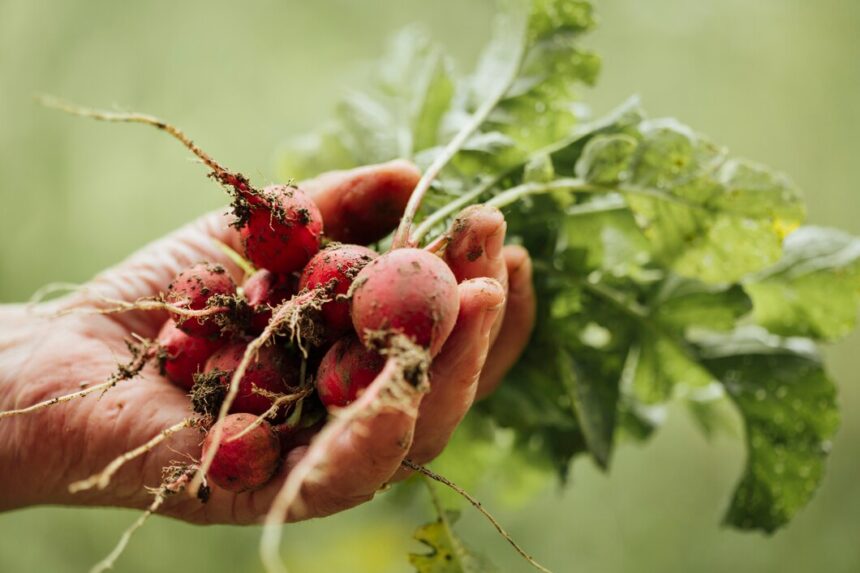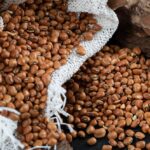Radishes are a fast-growing, nutrient-rich vegetable that can be a lucrative crop for South African farmers. They are relatively easy to grow, making them suitable for both novice and experienced growers. This article provides a detailed guide on the entire process of growing radishes from seed to harvest, including essential inputs, machinery, disease management, soil requirements, and storage.
1. Land Preparation
Soil Type and Preparation:
- Radishes prefer well-drained, sandy loam or loamy soil with a pH between 6.0 and 7.0. Soil that retains moisture but drains well is ideal.
- Before planting, prepare the land by tilling the soil to a depth of 15-20 cm to break up clumps and aerate the soil.
- Incorporate organic matter, such as well-rotted compost or manure, to improve soil fertility and structure.
- Remove rocks, weeds, and debris to create a clean planting bed.
Machinery Required:
- Tractors for tilling and soil preparation.
- Seed drills or hand planters for sowing seeds.
2. Seed Selection and Sowing
Seed Selection:
- Choose quality, disease-resistant radish seeds suitable for your local climate. Popular varieties in South Africa include Cherry Belle, French Breakfast, and White Icicle.
Sowing:
- Sow seeds directly into the prepared soil 1-2 cm deep. Space seeds about 2.5-5 cm apart in rows 30 cm apart.
- The optimal time for sowing radishes in South Africa is during the cooler months (March to September) to avoid bolting and to ensure a good harvest.
3. Germination and Early Growth Stage
Germination:
- Seeds will typically germinate within 5-10 days, depending on soil temperature (optimal at 15-20°C).
- Maintain consistent soil moisture during this period to ensure successful germination.
Watering:
- Water the seeds thoroughly after sowing and keep the soil consistently moist but not waterlogged.
- During the germination phase, aim to provide about 2.5 cm of water per week, either through rainfall or irrigation.
4. Vegetative Growth Stage
Fertilizers:
- Apply a balanced fertilizer (NPK 10-10-10) at the time of planting to provide essential nutrients.
- Side-dress with additional nitrogen fertilizer (urea) after the first 2-3 weeks to promote healthy leaf growth.
Water Requirements:
- Radishes require about 2.5-5 cm of water per week during this stage. Adjust frequency based on rainfall and temperature.
- Watering should be more frequent in hot, dry conditions to prevent the roots from becoming woody.
Weed Control:
- Regularly monitor for weeds, especially during the early growth stages. Use mulch or mechanical weeding to suppress weed growth without damaging radishes.
5. Pest and Disease Management
Common Pests:
- Flea Beetles: Small insects that create holes in leaves. Apply insecticidal soap or neem oil if infestations are severe.
- Aphids: Can cause leaf curl and reduce plant vigor. Use insecticidal soap or natural predators like ladybugs to manage populations.
Common Diseases:
- Downy Mildew: A fungal disease that causes yellow spots on leaves. Improve air circulation and avoid overhead watering. Fungicides can be applied if necessary.
- Root Rot: Caused by overwatering or poorly drained soils. Ensure proper soil drainage and reduce watering if symptoms occur.
6. Harvesting
Harvest Timing:
- Radishes are typically ready to harvest 25-45 days after sowing, depending on the variety. Harvest when roots are 2.5-5 cm in diameter for optimal flavor and texture.
- Pull radishes carefully from the soil to avoid damaging them.
Tools Required:
- Use a hand trowel or garden fork to loosen the soil around the roots if they are stubborn.
7. Post-Harvest Handling and Storage
Cleaning and Sorting:
- After harvesting, remove excess soil and wash radishes gently in cool water to avoid bruising.
- Sort radishes by size and quality, discarding any damaged or diseased ones.
Storage:
- Store radishes in a cool, humid environment (ideal temperature is 0-4°C). They can be kept in a refrigerator or a root cellar.
- Keep radishes in perforated plastic bags to maintain humidity and prevent drying out. Properly stored, radishes can last for several weeks.
Growing radishes from seed to harvest requires careful attention to soil preparation, pest and disease management, and post-harvest handling. By following these detailed steps, South African farmers can cultivate healthy radish crops, ensuring a bountiful harvest and contributing to food security. Emphasizing best practices and efficient use of resources will lead to improved productivity and profitability in radish farming.







